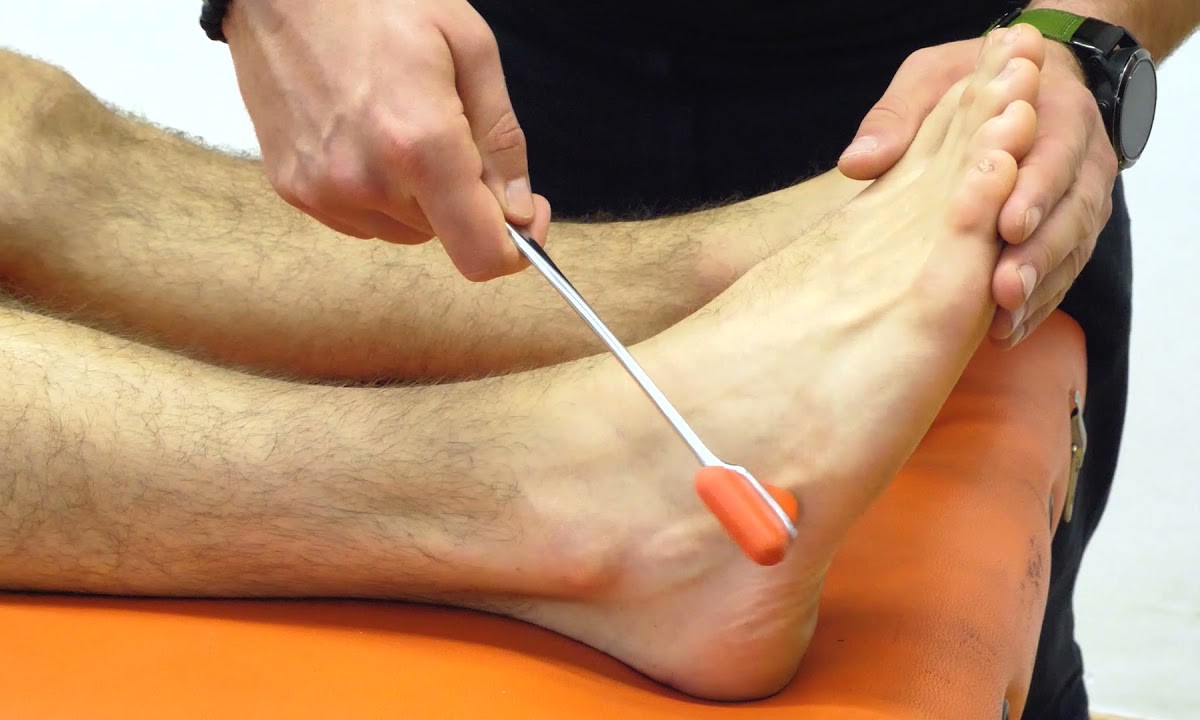
Ever heard of the Bekhterev-Mendel Reflex? This fascinating neurological phenomenon can tell us a lot about the human body. Named after two pioneering neurologists, Vladimir Bekhterev and Kurt Mendel, this reflex involves an involuntary contraction of muscles in response to specific stimuli. Why is it important? It helps doctors diagnose certain neurological conditions. For instance, an abnormal response might indicate issues with the spinal cord or brain. Understanding this reflex can aid in early detection of diseases like multiple sclerosis or spinal cord injuries. Ready to learn more? Let’s dive into 25 intriguing facts about the Bekhterev-Mendel Reflex!
Key Takeaways:
- The Bekhterev-Mendel Reflex is a neurological test that checks the foot's muscle response when tapped. It helps doctors assess nerve and spinal cord health, and can reveal conditions like multiple sclerosis and neuropathy.
- This reflex, named after neurologists Bekhterev and Mendel, has been used for over a century to diagnose neurological disorders. It's a simple but important test that provides valuable insights into a patient's nervous system.
What is the Bekhterev-Mendel Reflex?
The Bekhterev-Mendel Reflex is a neurological phenomenon named after two prominent neurologists, Vladimir Bekhterev and Kurt Mendel. This reflex is often examined in clinical settings to assess the integrity of the nervous system. Let's dive into some fascinating facts about this reflex.
-
The Bekhterev-Mendel Reflex involves the contraction of the muscles in the foot when the sole is stimulated.
-
It is considered a type of deep tendon reflex, similar to the knee-jerk reflex.
-
This reflex is typically tested by tapping the sole of the foot with a reflex hammer.
-
The reflex is named after Vladimir Bekhterev, a Russian neurologist, and Kurt Mendel, a German neurologist.
Historical Background
Understanding the history behind the Bekhterev-Mendel Reflex can provide insight into its significance in neurology.
-
Vladimir Bekhterev first described this reflex in the late 19th century.
-
Kurt Mendel further studied and documented the reflex in the early 20th century.
-
Bekhterev was a pioneer in the field of neurophysiology and made significant contributions to the understanding of reflexes.
-
Mendel's work helped to establish the clinical importance of this reflex in diagnosing neurological disorders.
Clinical Significance
The Bekhterev-Mendel Reflex is more than just an interesting neurological phenomenon; it has practical applications in medicine.
-
This reflex is used to assess the integrity of the spinal cord and peripheral nerves.
-
An exaggerated or diminished reflex response can indicate underlying neurological conditions.
-
Conditions such as multiple sclerosis, spinal cord injuries, and peripheral neuropathy can affect this reflex.
-
Neurologists often include this reflex test as part of a comprehensive neurological examination.
How to Test the Reflex
Testing the Bekhterev-Mendel Reflex is straightforward but requires some skill and knowledge.
-
The patient is usually asked to lie down or sit with their legs extended.
-
A reflex hammer is used to gently tap the sole of the foot.
-
The examiner observes the muscle contraction in the foot and toes.
-
A normal response involves a slight contraction of the foot muscles.
Variations and Abnormalities
Not all reflex responses are the same; variations can provide additional diagnostic clues.
-
A hyperactive reflex may suggest an upper motor neuron lesion.
-
A hypoactive or absent reflex could indicate a lower motor neuron lesion.
-
Reflex asymmetry between the two feet can be a sign of localized nerve damage.
-
Some individuals may naturally have a more pronounced reflex without any underlying pathology.
Interesting Tidbits
Here are some lesser-known facts about the Bekhterev-Mendel Reflex that might surprise you.
-
Bekhterev and Mendel never actually met, despite their collaborative contribution to neurology.
-
The reflex is sometimes referred to as the "foot sole reflex" in older medical literature.
-
Bekhterev also discovered the Bekhterev's Disease, a form of chronic arthritis affecting the spine.
-
Kurt Mendel was also known for his work on the Mendel-Bekhterev phenomenon, another neurological reflex.
-
The study of reflexes like the Bekhterev-Mendel Reflex has paved the way for modern neurodiagnostic techniques.
Final Thoughts on Bekhterev-Mendel Reflex
Understanding the Bekhterev-Mendel Reflex sheds light on the complexities of our nervous system. This reflex, often overlooked, plays a crucial role in diagnosing neurological conditions. Knowing these 25 facts can help you appreciate the intricate workings of the human body. From its discovery by Vladimir Bekhterev and Kurt Mendel to its significance in modern medicine, this reflex is more than just a medical term. It’s a window into how our bodies respond to stimuli and maintain balance. Whether you're a student, a medical professional, or just curious, these insights offer a deeper appreciation for the marvel that is the human nervous system. Keep these facts in mind, and you'll have a better grasp of how our bodies function and how medical professionals use this reflex in their practice.
Frequently Asked Questions
Was this page helpful?
Our commitment to delivering trustworthy and engaging content is at the heart of what we do. Each fact on our site is contributed by real users like you, bringing a wealth of diverse insights and information. To ensure the highest standards of accuracy and reliability, our dedicated editors meticulously review each submission. This process guarantees that the facts we share are not only fascinating but also credible. Trust in our commitment to quality and authenticity as you explore and learn with us.
